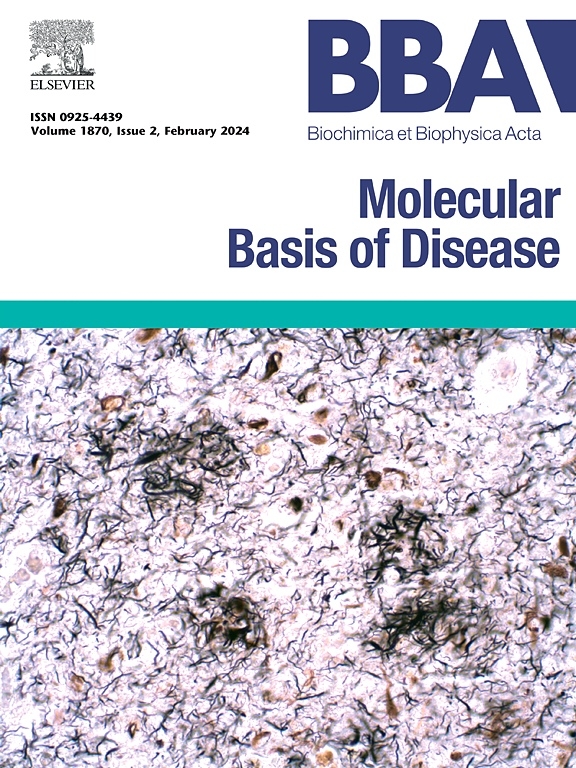ALB inhibits tumor cell proliferation and invasion by regulating immune microenvironment and endoplasmic reticulum stress in clear cell renal cell carcinoma
IF 4.2
2区 生物学
Q2 BIOCHEMISTRY & MOLECULAR BIOLOGY
Biochimica et biophysica acta. Molecular basis of disease
Pub Date : 2025-01-23
DOI:10.1016/j.bbadis.2025.167672
引用次数: 0
Abstract
Objective
The aim of this work is to identify putative hub genes for the advancement of clear cell renal cell carcinoma (ccRCC) and determine the fundamental mechanisms.
Methods
We employed multiple bioinformatics techniques to screen hub genes. Key hub gene expression levels in ccRCC were assessed. A plethora of functional experiments were carried out to explore the biological role of hub gene. Based on genome-wide association studies, a Mendelian randomization research was conducted to ascertain the causative relationship between albumin (ALB) and ccRCC.
Results
ALB was low expression in ccRCC tissues and cell lines. It was an independent predictor of progression-free survival following treatment and the overall survival of ccRCC patients. ALB overexpression exhibited the reverse effects of ALB knockdown, which increased cell proliferation, migration, and invasion while inhibiting cell death. Similarly, ALB overexpression inhibited the growth of ccRCC tumors in vivo. Consistent with functional enrichment analysis, ALB overexpression activates the endoplasmic reticulum stress (ERS) in vitro and vivo. The Mendelian randomization showed ALB was associated with the risk of ccRCC. Additionally, ALB was causally associated with γδT cells infiltrates in ccRCC.
Conclusion
ALB plays an important effect in ccRCC via activation of the ERS and regulating immune microenvironment.
求助全文
约1分钟内获得全文
求助全文
来源期刊
CiteScore
12.30
自引率
0.00%
发文量
218
审稿时长
32 days
期刊介绍:
BBA Molecular Basis of Disease addresses the biochemistry and molecular genetics of disease processes and models of human disease. This journal covers aspects of aging, cancer, metabolic-, neurological-, and immunological-based disease. Manuscripts focused on using animal models to elucidate biochemical and mechanistic insight in each of these conditions, are particularly encouraged. Manuscripts should emphasize the underlying mechanisms of disease pathways and provide novel contributions to the understanding and/or treatment of these disorders. Highly descriptive and method development submissions may be declined without full review. The submission of uninvited reviews to BBA - Molecular Basis of Disease is strongly discouraged, and any such uninvited review should be accompanied by a coverletter outlining the compelling reasons why the review should be considered.

 求助内容:
求助内容: 应助结果提醒方式:
应助结果提醒方式:


